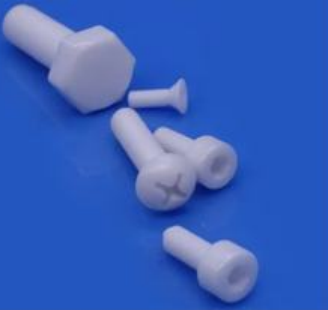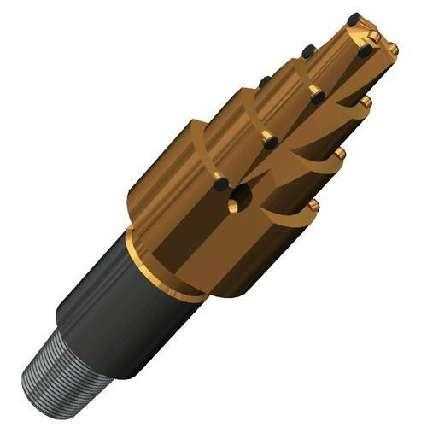Discover Premium Ceramic Products | Durability & Elegance United | Advanced Ceramics
1. Introduction
Just 24 hours ago, a major materials science conference in Germany spotlighted breakthroughs in ultra-high-temperature ceramics, with silicon carbide crucibles taking center stage due to their unmatched thermal shock resistance and chemical inertness. As industries from metallurgy to semiconductor manufacturing push operational limits, the demand for reliable, high-performance crucibles has never been higher.

Silicon carbide crucibles are not just industrial workhorses—they’re engineering marvels. But what truly sets them apart from alternatives like silicon nitride or boron carbide? And why are we suddenly seeing silicon carbide appear in everything from baking dishes to plumbing components? Let’s unpack the science, compare key materials, and explore real-world applications.
2. Understanding Silicon Carbide Crucibles
A silicon carbide crucible is a container made primarily from silicon carbide (SiC), engineered to withstand extreme temperatures—often exceeding 1,600°C—while resisting corrosion from molten metals and aggressive slags. Unlike traditional clay-graphite crucibles, SiC versions offer superior thermal conductivity, mechanical strength, and longevity.
These crucibles are typically manufactured using either reaction-bonded (RBSiC) or sintered silicon carbide methods. RBSiC silicon carbide tile blocks, for instance, are created by infiltrating porous carbon preforms with molten silicon, yielding a dense, strong composite ideal for crucible linings and structural components.
3. Material Showdown: Silicon Carbide vs. Key Alternatives
3.1. Boron Carbide vs Silicon Carbide

Boron carbide (B4C) is harder than silicon carbide and excels in ballistic and abrasive applications. However, it’s significantly more expensive and less thermally conductive. For crucibles—where thermal shock resistance and heat dissipation are critical—silicon carbide outperforms boron carbide in both cost-efficiency and functional reliability.
3.2. Silicon Nitride vs Silicon Carbide
Silicon nitride (Si3N4) offers excellent fracture toughness and is widely used in high-stress, high-temperature environments like turbine blades. Some manufacturers even operate a silicon nitride crucible factory to serve niche markets. Yet, silicon nitride lacks the thermal conductivity of silicon carbide, making it less ideal for applications requiring rapid, uniform heating—such as metal melting.
Custom silicon nitride heat shields and silicon nitride rings are valuable in aerospace, but when it comes to crucibles, silicon carbide remains dominant due to its balance of thermal, mechanical, and economic properties.
4. Beyond Crucibles: The Expanding Universe of Silicon Carbide Ceramics
The versatility of silicon carbide extends far beyond industrial melting pots. Engineers and designers are leveraging its durability and aesthetic appeal in unexpected ways.

- Silicon carbide ceramic tiles and rbsic silicon carbide tile blocks are used in kiln linings and wear-resistant flooring.
- Silicon carbide burner nozzles, silicon carbide bricks, and silicon carbide tubes (including silicon carbide thermocouple protection tubes and silicon carbide mullite tubes) are standard in high-temperature furnaces.
- Even consumer goods are embracing SiC: silicon carbide ceramic baking dishes, silicon carbide ceramic dinner plates, and silicon carbide ceramic serving bowls combine heat retention with modern design. Brands like Staub now explore silicon carbide baking dish staub variants for gourmet kitchens.
From silicon carbide ceramic butter dishes with lids to silicon carbide Christmas ceramic platters, this material is bridging industrial robustness with domestic elegance.
5. Specialized Components: Discs, Pipes, and More
Silicon carbide’s utility isn’t limited to bulk forms. Precision components like silicon carbide discs—used in everything from silicon carbide ceramic disc taps to silicon carbide diamond grinding discs for pottery—highlight its adaptability.
In fluid handling, silicon carbide ceramic pipes and silicon carbide ceramic plumbing pipes offer corrosion resistance unmatched by metals. Meanwhile, silicon carbide porous ceramic tubes enable controlled gas diffusion in chemical processes.
Even niche items like silicon carbide ceramic plates for painting or silicon carbide ceramic children’s plates benefit from the material’s non-toxic, scratch-resistant surface.
6. Manufacturing and Market Trends
The global push for energy efficiency and electrification is driving demand for high-purity ceramics. While the high purity silicon nitride powder market grows steadily, silicon carbide dominates volume applications due to scalable production and lower raw material costs.
Recent innovations focus on hybrid composites—such as silicon carbide zirconia tubes—that merge the best properties of multiple ceramics. Yet, for crucibles and high-heat containment, pure or RBSiC-based silicon carbide remains the benchmark.
7. Conclusion
Silicon carbide crucibles stand out not just for their ability to survive extreme conditions, but for enabling efficiency, safety, and innovation across industries. Whether you’re melting aluminum in a foundry or serving pie on a silicon carbide ceramic pie dish, the legacy of this remarkable ceramic continues to expand. As material science evolves, silicon carbide’s role—from furnace linings to dinner tables—will only grow more integral.
Our Website founded on October 17, 2012, is a high-tech enterprise committed to the research and development, production, processing, sales and technical services of ceramic relative materials such as What. Our products includes but not limited to Boron Carbide Ceramic Products, Boron Nitride Ceramic Products, Silicon Carbide Ceramic Products, Silicon Nitride Ceramic Products, Zirconium Dioxide Ceramic Products, etc. If you are interested, please feel free to contact us.
